Western Honey Bee
- January 29, 2024
- 0 comment
The Western honey bee, scientifically known as Apis mellifera, is one of the most recognized and economically significant bee species globally. Originating from Africa and Europe, this species has been spread by humans to every continent except Antarctica, primarily due to its essential role in agriculture as a pollinator and honey producer.
Physical Characteristics
| Characteristics | Description |
| Scientific Name | Apis mellifera |
| Lifespan | Queens: Up to 3-4 years Workers: 21 to 60 days Drones: 8 weeks |
| Habitat | Meadows, gardens, woodlands, and areas where flowering plants are abundant. |
| Diet | Water, Nectar, and pollen from flowering plants. |
| Size | Queens: Approximately 18-20 mm in length. Workers: Typically 13-15 mm in length. Drones: About 15-17 mm in length. |
| Range | Africa or Asia, and it spread naturally through Africa, the Middle East, and Europe. |
| Behavior | Nest building, foraging, storing and ripening food, nursing the brood, temperature regulation, hygiene, and defense. |
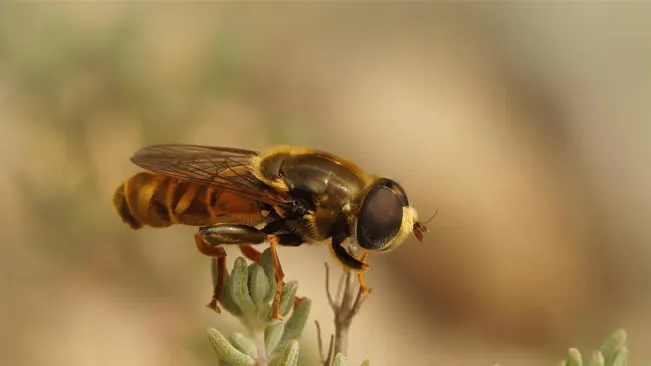
The Western honey bee measures approximately 15 mm in length. The body is divided into three primary segments: the head, thorax, and abdomen. The head houses complex eyes, antennae, and mandibles. The thorax bears the wings and legs, while the abdomen contains vital organs and the stinger. Their coloration ranges from golden brown to almost black, with variations often seen between different subspecies and castes within the hive.
Social Structure
The society of the Western honey bee is highly structured and collaborative, consisting of three distinct castes:

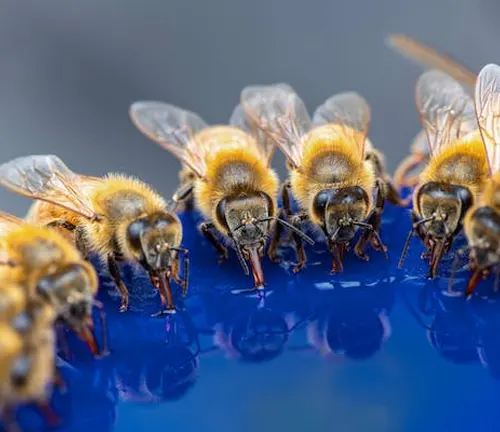
- Queens: A single queen, the only fertile female in the colony, is responsible for laying eggs. A healthy queen can lay up to 2000 eggs per day during peak seasons.
- Workers: These sterile females perform various tasks, including foraging for nectar and pollen, tending to the queen and larvae, maintaining and defending the hive, and regulating hive temperature.
- Drones: These are the male bees, whose primary role is to mate with a virgin queen. Drones are generally present only during the mating season and are expelled from the hive as winter approaches.
Behavior and Ecology
Western honey bees are renowned for their elaborate communication system, primarily through the “waggle dance,” a unique method of conveying information about the direction and distance of food sources relative to the hive.
Their foraging behavior is pivotal for the pollination of a myriad of plant species, making them crucial in maintaining biodiversity and the production of a large portion of the human food supply through the pollination of fruit trees, vegetables, and nuts.
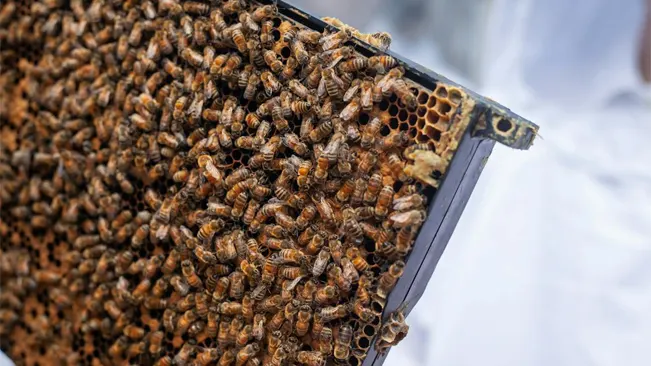
Threats to Survival
Pests and Diseases
The Varroa mite and diseases such as American foulbrood pose significant threats to honey bee colonies. These issues can weaken and eventually lead to the collapse of colonies if not properly managed.
Pesticides and Chemicals
The widespread use of pesticides in agriculture can harm non-target species like the Western honey bee, leading to acute poisoning or long-term detrimental effects on bee health and the viability of colonies.
Habitat Loss and Climate Change
Changes in land use, deforestation, and urbanization lead to habitat loss for bees. Additionally, climate change can disrupt the synchrony between flowering plants and the timing of bee activities, further endangering their survival.
Colony Life Cycle
The colony life cycle of the Western honey bee, Apis mellifera, is a captivating display of natural organization and adaptation. It begins with the swarming process in spring, where the old queen and part of the colony depart to form a new hive, leaving behind new queen cells. The first queen to emerge takes control, often after eliminating her rivals. This period sees intense activity within the hive: the queen lays thousands of eggs, while workers specialize in tasks like brood rearing and foraging for nectar and pollen. Workers also construct the honeycomb using wax produced from their glands, serving as storage for honey and a nursery for the brood. As winter approaches, the colony downsizes by expelling drones to conserve resources. Workers cluster around the queen, generating heat to survive the cold months, relying on stored honey for sustenance.
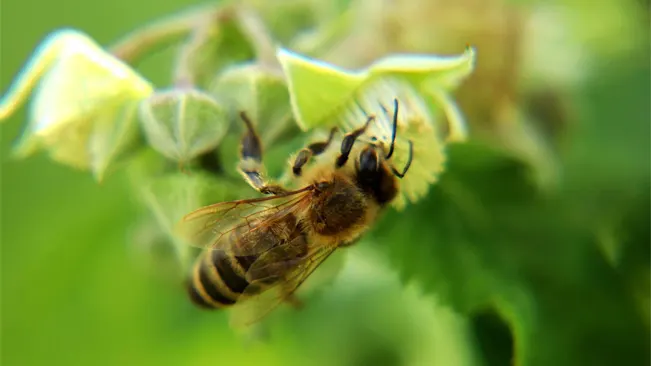
With the arrival of spring, the hive reawakens. The queen resumes her prolific egg-laying, and the colony’s population starts to swell, initiating preparations for the next generation. The cycle of life continues with the hive’s growth, leading to another swarming phase where a portion of the colony, along with the old queen, ventures out to establish a new home. This remarkable cycle, characterized by phases of growth, adaptation, and renewal, underscores the resilience and complexity of the Western honey bee, reflecting its essential role in ecosystems and the broader environment.
Role of the Western Honey Bee
The Western honey bee (Apis mellifera) is not just a producer of honey; it plays a multifaceted role in ecosystems and human economies. The benefits of this species are vast and touch on agriculture, biodiversity, and even cultural aspects.
Agricultural and Economic Benefits
- Pollination Services: The most significant contribution of Western honey bees is their role in the pollination of crops. About one-third of the food humans consume is derived from insect-pollinated plants, with honey bees being the most prolific pollinators. They enhance the yield and quality of crops like fruits, vegetables, and nuts, contributing billions to global economies.
- Honey Production: Honey bees produce honey from the nectar of flowering plants. Honey is not only a natural sweetener but also recognized for its medicinal properties, including antibacterial and anti-inflammatory effects.
- Bee Products: Other products from beekeeping include beeswax (used in candles, cosmetics, and polishes), propolis (a resinous substance with medicinal properties), and royal jelly (used in health and skincare products).
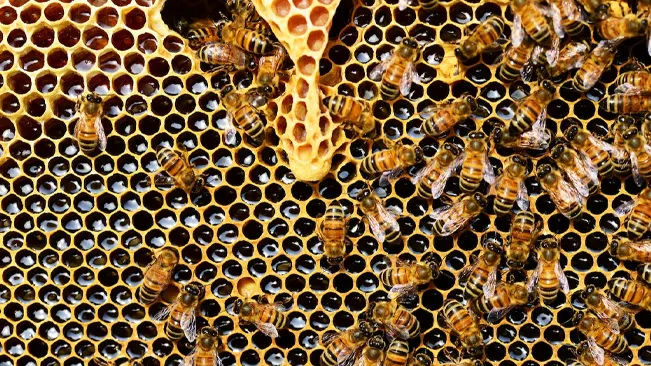
Environmental and Ecological Benefits
- Biodiversity Maintenance: By pollinating a wide variety of plants, honey bees support the growth of flowers and fruits, contributing to the maintenance of diverse habitats and ecosystems. This pollination is crucial for the reproduction of many wild and cultivated plant species.
- Food Chain Support: Honey bees serve as a food source for several species of birds and insects, thus playing a role in the broader food web.
Scientific and Educational Importance
- Research and Education: Honey bees are model organisms in scientific research. They are used to study topics like genetics, social behavior, and environmental impacts on living organisms. Their well-defined social structure and communication methods, especially the “waggle dance,” offer fascinating insights into insect behavior.
- Beekeeping Culture: Beekeeping (apiculture) is an ancient practice that holds cultural significance in many societies. It supports rural livelihoods, fosters community ties, and teaches responsibility and respect for nature.
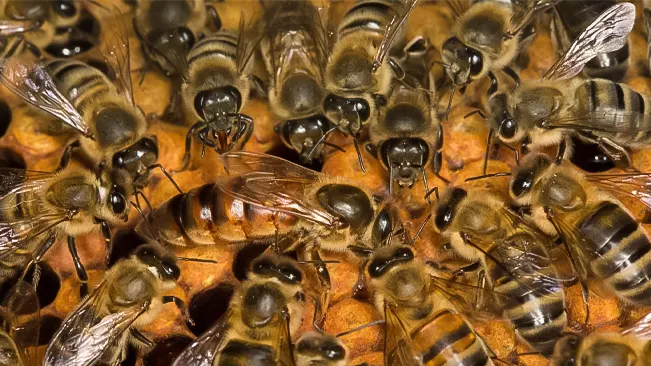
Environmental Indicators
- Bioindicators: The health and behavior of honey bee colonies can indicate broader environmental conditions. Changes in honey bee populations can signal alterations in the ecosystem, prompting investigations into environmental health.
The Western honey bee is invaluable not just for its direct economic contributions through agriculture and bee products but also for its role in sustaining biodiversity, supporting education and research, and indicating environmental health. The myriad benefits underscore the importance of protecting and conserving this vital species.
Queen
The queen bee is the pivotal figure in a Western honey bee (Apis mellifera) colony, with her primary role being to lay eggs and perpetuate the hive’s population. Distinct from birth, she is exclusively fed royal jelly, triggering her development into a fertile queen. After a mating flight early in her life, she spends her years laying up to 2000 eggs daily.
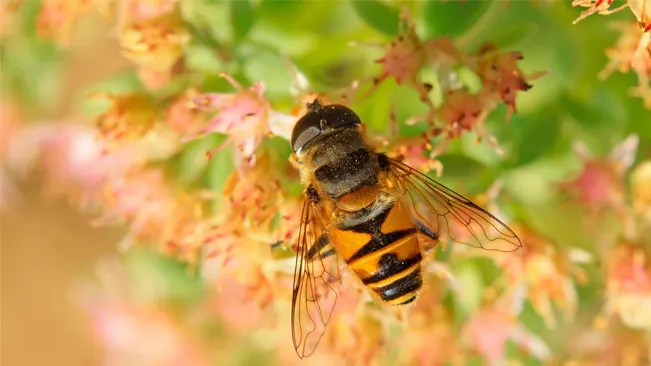
Her presence and health are crucial, as she produces pheromones that maintain the hive’s harmony and direct its activities. These pheromones suppress the development of other potential queens and guide the hive’s behavior. When her pheromone levels wane, the hive may prepare for swarming (creating a new colony) or superseding (replacing) her, indicating her central role in the hive’s lifecycle.
Despite her importance, the queen is vulnerable to threats like diseases, pests, and environmental challenges. Protecting the queen is vital for beekeepers and conservationists, as her well-being directly impacts the colony’s health and productivity. In essence, the queen bee is not just a monarch but the linchpin in the complex social structure and functioning of the honey bee colony.
Conclusion
The Western honey bee, Apis mellifera, stands as a testament to the intricate balance of nature and its profound impact on human life and the environment. These bees are not just producers of honey but are pivotal pollinators, integral to the health of ecosystems and the success of agricultural systems worldwide. Their complex social structures, sophisticated communication methods, and the pivotal role of the queen bee in the hive’s functioning highlight a highly organized and efficient community.
However, their existence is threatened by challenges such as habitat loss, pesticide use, diseases, and climate change. These threats not only jeopardize the bees but also the broader ecological balance and global food security, given their role in pollination. The plight of the Western honey bee accentuates the interconnectedness of human actions and environmental health, urging a collective responsibility towards sustainable practices and conservation efforts.
The Western honey bee embodies resilience, cooperation, and ecological significance. Their continued survival and prosperity are imperative, reminding us of our shared duty to safeguard and cherish the natural world for the benefit of all species, including our own.
Frequently Asked Question (FAQs)
1. What is a Western honey bee?
The Western honey bee, also known as the European honey bee, is a species of honey bee native to Europe, Asia, and Africa. It is known for its role in pollination and for producing honey and beeswax.
2. What is the lifespan of a Western honey bee?
The lifespan of a Western honey bee varies depending on its role in the colony. Worker bees typically live for 6 weeks during the active season, while drones (males) live for about 8 weeks. The queen bee can live for several years.
3. How do Western honey bees communicate?
Western honey bees communicate primarily through the release of pheromones and through a dance language. The “waggle dance,” for example, is used to indicate the direction and distance to a food source.
4. What is the social structure of a Western honey bee colony?
A typical Western honey bee colony consists of a single queen, thousands of female worker bees, and, during the breeding season, hundreds of male drones. The queen is the only reproductive female in the colony, while the workers perform various tasks such as foraging for food, caring for the queen and larvae, and maintaining the hive.
5. How do Western honey bees make honey?
Honey bees collect nectar and pollen from flowers. The nectar is carried in their stomachs and transferred to other worker bees in the hive, gradually being converted into honey by the breakdown of complex sugars into simpler ones. It is then stored in honeycomb cells and sealed with beeswax.
6. What are the main threats to Western honey bees?
Western honey bees face several threats, including pesticides, habitat loss, climate change, diseases, and parasites like the Varroa mite. These factors can lead to colony collapse disorder, a phenomenon where the majority of worker bees disappear, leaving behind a queen and a few nurse bees to care for the remaining immature bees.
7. How can we help protect and support Western honey bee populations?
Supporting Western honey bee populations can involve planting bee-friendly flowers, reducing pesticide use, supporting local beekeepers by buying local honey, and raising awareness about the importance of bees in ecosystems.


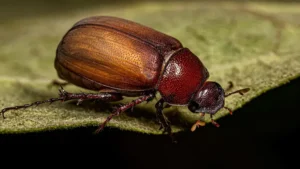
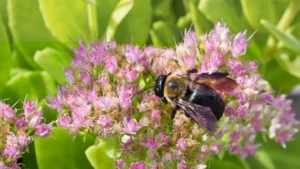
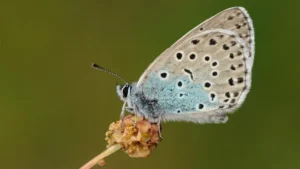
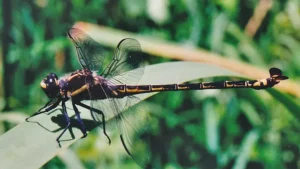
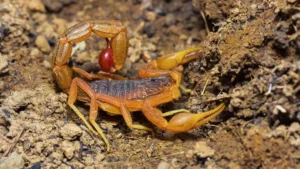
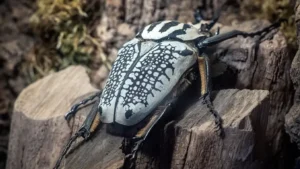

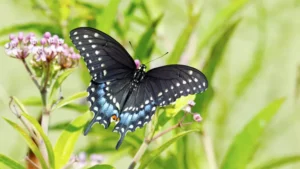
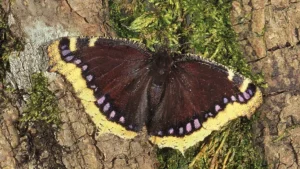

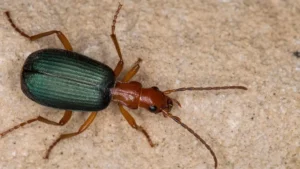
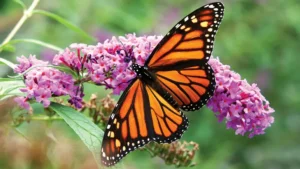
Leave your comment